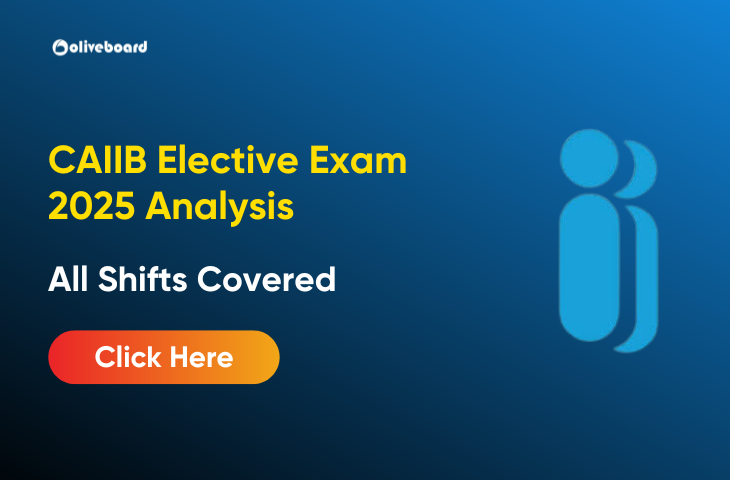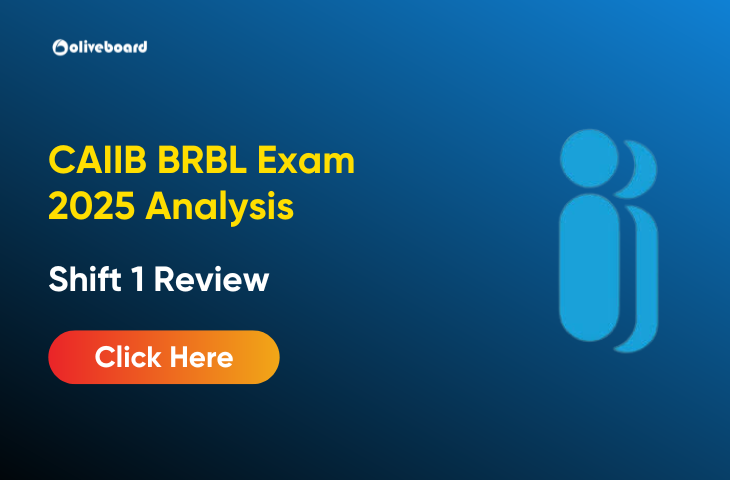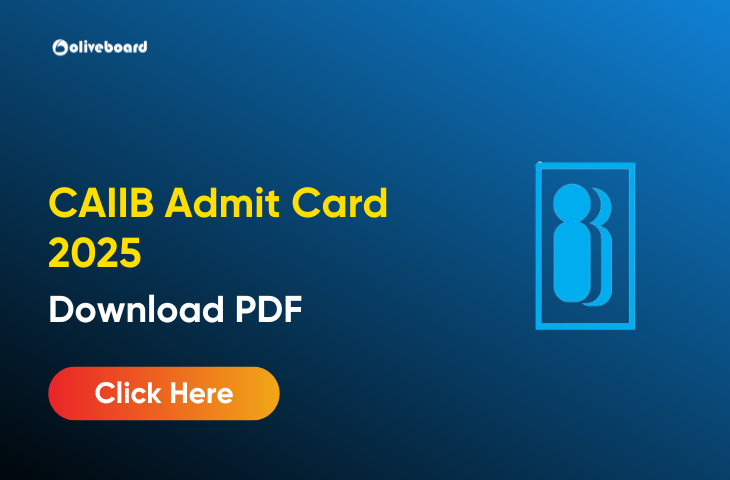CAIIB ABM MCQs
CAIIB ABM MCQs: Preparing for the CAIIB ABM (Advanced Bank Management) exam requires a strategic approach, as it combines in-depth knowledge with practical case study analysis and multiple-choice questions (MCQs). In this article, we will walk you through the most expected 40 case study & CAIIB ABM MCQs that are essential for your exam preparation. Whether you are looking to improve your theoretical understanding or solve complex case studies, this article will give you the tools to succeed.
Introduction to CAIIB ABM
The CAIIB (Certified Associate of the Indian Institute of Bankers) exam is one of the most recognized certifications in the banking industry. The ABM (Advanced Bank Management) paper is a core subject that focuses on the strategic, managerial, and operational aspects of banking. It covers a range of topics such as:
- Banking operations and regulations
- Risk management
- Credit management
- Financial management
- Case studies related to business banking scenarios
As an aspirant, you need to grasp the fundamental concepts while preparing for case studies and MCQs that challenge your practical application skills.
Most Expected CAIIB ABM MCQs
Now let’s dive into the most expected 40 MCQs based on the CAIIB ABM syllabus. These will help you test your knowledge on key topics like banking regulations, credit management, and risk assessment.
Banking Operations & Management
- Which of the following is the primary objective of Risk Management in banking?
- A) Maximizing profits
- B) Minimizing risks
- C) Increasing market share
- D) Enhancing liquidity
- Answer: B) Minimizing risks
- What is the maximum amount a bank can lend to a single borrower under the prudential lending norms?
- A) 10% of capital
- B) 15% of capital
- C) 25% of capital
- D) 50% of capital
- Answer: C) 25% of capital
Credit Management
- Which of the following is NOT a part of credit risk assessment?
- A) Borrower’s financial health
- B) Industry analysis
- C) External market conditions
- D) Interest rate policies
- Answer: D) Interest rate policies
- In case of a default in loan repayment, what should be the first step for a bank?
- A) Initiate legal proceedings
- B) Restructure the loan
- C) Write off the loan
- D) Liquidate the collateral
- Answer: B) Restructure the loan
Financial Management
- What is the primary function of the financial inclusion process in banking?
- A) Enhancing customer satisfaction
- B) Expanding banking products
- C) Providing banking services to the underserved
- D) Minimizing operational costs
- Answer: C) Providing banking services to the underserved
- Which of the following is a key measure of a bank’s profitability?
- A) Loan-to-deposit ratio
- B) Return on assets (ROA)
- C) Capital adequacy ratio
- D) Non-performing asset (NPA) ratio
- Answer: B) Return on assets (ROA)
Risk Management
- Which of the following is a major risk faced by banks during economic downturns?
- A) Interest rate risk
- B) Liquidity risk
- C) Credit risk
- D) All of the above
- Answer: D) All of the above
- Which of the following tools is used to hedge against interest rate risk?
- A) Options
- B) Futures
- C) Swaps
- D) All of the above
- Answer: D) All of the above
- What is the key objective of Basel III regulations?
- A) Enhancing liquidity standards
- B) Improving market risk management
- C) Strengthening capital adequacy
- D) Reducing credit risk
- Answer: C) Strengthening capital adequacy
Tips for Success in CAIIB ABM
To succeed in CAIIB ABM, here are a few tips to keep in mind:
- Understand Key Concepts: Focus on understanding key concepts in banking operations, credit management, and risk management.
- Practice Regularly: Solve MCQs and case studies regularly to improve your problem-solving skills.
- Stay Updated: Follow the latest developments in the banking industry, including RBI policies and financial regulations.
- Time Management: During the exam, manage your time effectively to ensure that you can attempt all questions.
Most Expected 40 CAIIB ABM MCQs
1. What is the maximum amount for which a bank can file a civil suit for recovery in a civil court?
A) ₹10 Lakhs
B) ₹20 Lakhs
C) ₹50 Lakhs
D) ₹1 Crore
Answer: B) ₹20 Lakhs
2. What is the investment and turnover criteria for classifying an entity as a micro-enterprise?
A) Investment up to ₹1 crore and turnover up to ₹2 crore
B) Investment up to ₹2 crore and turnover up to ₹5 crore
C) Investment up to ₹1 crore and turnover up to ₹5 crore
D) Investment up to ₹50 lakhs and turnover up to ₹1 crore
Answer: C) Investment up to ₹1 crore and turnover up to ₹5 crore
3. What is the minimum amount for which a bank can apply for a CIRP under the Insolvency and Bankruptcy Code?
A) ₹10 Lakhs
B) ₹50 Lakhs
C) ₹1 Crore
D) ₹5 Crore
Answer: C) ₹1 Crore
4. At what percentage of voting share can an IRP become the RP in a Committee of Creditors (CoC)?
A) 51%
B) 60%
C) 66%
D) 75%
Answer: C) 66%
5. What is the appeal process if a claim is rejected by the liquidator during a company’s liquidation process?
A) Appeal to the National Company Law Tribunal (NCLT)
B) Appeal to the High Court
C) Appeal to the Supreme Court
D) Appeal to the Ministry of Corporate Affairs
Answer: A) Appeal to the National Company Law Tribunal (NCLT)
6. What is the next step if a person is not satisfied with the decision of the NCLT?
A) Appeal to the NCLT Appellate Tribunal
B) Appeal to the Supreme Court
C) Appeal to the Ministry of Corporate Affairs
D) Appeal to the RBI
Answer: A) Appeal to the NCLT Appellate Tribunal
7. Can the Committee of Creditors (CoC) withdraw an application for insolvency proceedings?
A) Yes, with 90% voting share
B) Yes, with 75% voting share
C) Yes, with 66% voting share
D) No, once the application is filed, it cannot be withdrawn
Answer: A) Yes, with 90% voting share
8. What is the procedure for a person dissatisfied with an NCLT order?
A) Appeal to the National Company Law Appellate Tribunal (NCLAT)
B) Appeal to the Supreme Court
C) Appeal to the RBI
D) Appeal to the High Court
Answer: A) Appeal to the National Company Law Appellate Tribunal (NCLAT)
9. What is the criteria for an entity to be classified as a small enterprise?
A) Investment up to ₹10 crore and turnover up to ₹50 crore
B) Investment up to ₹1 crore and turnover up to ₹5 crore
C) Investment up to ₹5 crore and turnover up to ₹10 crore
D) Investment up to ₹10 crore and turnover up to ₹100 crore
Answer: A) Investment up to ₹10 crore and turnover up to ₹50 crore
10. If a person is dissatisfied with the decision of the educational authority under the law, what is the next course of action?
A) Appeal to the Appellate Authority
B) Appeal to the High Court
C) Appeal to the Supreme Court
D) File a review petition with the same authority
Answer: A) Appeal to the Appellate Authority
11. What is the role of the Committee of Creditors (CoC) in the CIRP process?
A) To select the Insolvency Professional
B) To approve the resolution plan
C) To initiate liquidation proceedings
D) To decide on the filing of an insolvency petition
Answer: B) To approve the resolution plan
12. What happens if the liquidation process of a company is initiated?
A) All creditors must be paid immediately
B) The company’s assets are sold to pay off creditors
C) The company continues operations under a new management
D) The company is dissolved without selling any assets
Answer: B) The company’s assets are sold to pay off creditors
13. What is the maximum limit for turnover to classify an entity as a micro-enterprise under the MSME criteria?
A) ₹2 crore
B) ₹3 crore
C) ₹5 crore
D) ₹10 crore
Answer: C) ₹5 crore
14. Which of the following is a primary responsibility of the Insolvency Resolution Professional (IRP)?
A) Conducting the resolution process
B) Liquidating the assets of the debtor
C) Making decisions regarding employee compensation
D) Forming the Committee of Creditors
Answer: A) Conducting the resolution process
15. What is the role of the National Company Law Tribunal (NCLT) in insolvency proceedings?
A) To resolve insolvency disputes
B) To hear appeals related to the insolvency process
C) To make a decision regarding the insolvency of a company
D) To appoint the Insolvency Professional
Answer: C) To make a decision regarding the insolvency of a company
16. What is the voting share required for creditors to approve the resolution plan in a Committee of Creditors (CoC)?
A) 51%
B) 60%
C) 66%
D) 75%
Answer: C) 66%
17. Under the Insolvency and Bankruptcy Code, what happens when a company’s debt exceeds ₹1 crore?
A) It is eligible for insolvency proceedings
B) It must pay off the debt within 90 days
C) The company must be liquidated immediately
D) No action is required until the debt exceeds ₹5 crore
Answer: A) It is eligible for insolvency proceedings
18. What is the purpose of the National Company Law Appellate Tribunal (NCLAT)?
A) To resolve disputes related to company law
B) To hear appeals against the decisions of the NCLT
C) To approve the resolution plans
D) To register companies
Answer: B) To hear appeals against the decisions of the NCLT
19. If a claim is rejected by a liquidator during the liquidation process, what can the claimant do?
A) Appeal to the National Company Law Tribunal (NCLT)
B) Appeal to the Committee of Creditors (CoC)
C) Re-file the claim with the liquidator
D) File a new claim with the RBI
Answer: A) Appeal to the National Company Law Tribunal (NCLT)
20. What is the minimum amount of default required for initiating CIRP under the Insolvency and Bankruptcy Code?
A) ₹50 lakhs
B) ₹1 crore
C) ₹5 crore
D) ₹10 crore
Answer: B) ₹1 crore
- Which of the following is the maximum amount for which a civil suit can be filed in a civil court by a bank for recovery?
- A) ₹10 lakh
- B) ₹20 lakh
- C) ₹50 lakh
- D) ₹1 crore
- Answer: B) ₹20 lakh
- What is the investment and turnover criterion for classifying an entity as a micro-enterprise?
- A) Investment up to ₹2 crore and turnover up to ₹5 crore
- B) Investment up to ₹1 crore and turnover up to ₹5 crore
- C) Investment up to ₹5 crore and turnover up to ₹10 crore
- D) Investment up to ₹50 lakh and turnover up to ₹1 crore
- Answer: B) Investment up to ₹1 crore and turnover up to ₹5 crore
- In a Committee of Creditors (CoC), what percentage of voting share is required to appoint an Insolvency Resolution Professional (IRP) as the Resolution Professional (RP)?
- A) 50%
- B) 66%
- C) 75%
- D) 80%
- Answer: B) 66%
- What is the minimum default amount required for initiating the CIRP process under the Insolvency and Bankruptcy Code (IBC)?
- A) ₹50 lakh
- B) ₹1 crore
- C) ₹5 crore
- D) ₹10 crore
- Answer: B) ₹1 crore
- If a claim is rejected by the liquidator, which authority can the creditor approach to appeal?
- A) National Company Law Tribunal (NCLT)
- B) Insolvency and Bankruptcy Board of India (IBBI)
- C) Appellate Tribunal for Insolvency Cases
- D) High Court
- Answer: A) National Company Law Tribunal (NCLT)
- Which body decides whether the IRP should continue as the RP during the CIRP process?
- A) NCLT
- B) CoC (Committee of Creditors)
- C) Insolvency and Bankruptcy Board of India (IBBI)
- D) Liquidator
- Answer: B) CoC (Committee of Creditors)
- Which of the following can withdraw the application for Corporate Insolvency Resolution Process (CIRP) during the process?
- A) Any single creditor
- B) A committee of creditors with 90% voting share
- C) NCLT
- D) Debtor (Corporate Debtor)
- Answer: B) A committee of creditors with 90% voting share
- If a person is aggrieved by the NCLT’s order, to which authority can they appeal?
- A) National Company Law Appellate Tribunal (NCLAT)
- B) Supreme Court
- C) High Court
- D) District Court
- Answer: A) National Company Law Appellate Tribunal (NCLAT)
- What is the primary responsibility of the Committee of Creditors (CoC) in an insolvency resolution process?
- A) To appoint the Liquidator
- B) To appoint the Insolvency Resolution Professional (IRP)
- C) To decide on the debtor’s business recovery plans
- D) To approve the resolution plan
- Answer: D) To approve the resolution plan
- Which of the following can initiate the process of Corporate Insolvency Resolution (CIRP) in case of a default?
- A) Government
- B) Corporate Debtor
- C) A single creditor
- D) Both A and B
- Answer: C) A single creditor
- What is the role of the Insolvency Professional during the Corporate Insolvency Resolution Process (CIRP)?
- A) To assist in the liquidation process
- B) To develop and implement a resolution plan
- C) To make decisions regarding employee benefits
- D) To decide on creditor claims
- Answer: B) To develop and implement a resolution plan
- When can a creditor initiate the Insolvency Resolution Process (IRP) under the Insolvency and Bankruptcy Code (IBC)?
- A) When the debtor defaults for 30 days
- B) When the default amount exceeds ₹1 crore
- C) When the debtor defaults for 90 days
- D) Only when the debtor requests for resolution
- Answer: B) When the default amount exceeds ₹1 crore
- Which of the following is a feature of the Insolvency and Bankruptcy Code (IBC)?
- A) Aims to provide a speedy and transparent resolution of corporate insolvency
- B) Allows the debtor to continue operations with no changes
- C) Provides no option for creditor claims
- D) Only applies to individuals
- Answer: A) Aims to provide a speedy and transparent resolution of corporate insolvency
- Which authority is responsible for overseeing the administration of the Insolvency and Bankruptcy Code (IBC) in India?
- A) RBI
- B) National Company Law Tribunal (NCLT)
- C) Insolvency and Bankruptcy Board of India (IBBI)
- D) Ministry of Corporate Affairs
- Answer: C) Insolvency and Bankruptcy Board of India (IBBI)
- Which of the following statements is true about Corporate Insolvency Resolution Process (CIRP)?
- A) The CIRP process can be completed within 90 days
- B) CIRP cannot extend beyond 180 days unless the NCLT approves
- C) The CIRP process can be extended for up to 5 years
- D) The creditor has no role in the CIRP process
- Answer: B) CIRP cannot extend beyond 180 days unless the NCLT approves
- What happens if the Committee of Creditors (CoC) approves a resolution plan during the Corporate Insolvency Resolution Process (CIRP)?
- A) The debtor company is liquidated
- B) The plan is submitted to the National Company Law Tribunal (NCLT) for approval
- C) The creditors lose their right to claim dues
- D) The Insolvency Professional gets replaced
- Answer: B) The plan is submitted to the National Company Law Tribunal (NCLT) for approval
- Which of the following is a mandatory requirement for the initiation of the Corporate Insolvency Resolution Process (CIRP)?
- A) Insolvency claim must be above ₹10 crore
- B) Default amount must be greater than ₹1 crore
- C) A creditor must represent at least 51% of total debt
- D) The debtor must have defaulted for over a year
- Answer: B) Default amount must be greater than ₹1 crore
- Who can serve as the Resolution Professional (RP) in a CIRP process?
- A) The debtor’s appointed lawyer
- B) Any employee of the corporate debtor
- C) A qualified Insolvency Professional
- D) A member of the Committee of Creditors
- Answer: C) A qualified Insolvency Professional
- What is the main objective of the Insolvency and Bankruptcy Code (IBC) in India?
- A) To provide a simple way of claiming bankruptcy
- B) To provide a time-bound mechanism for resolving insolvency
- C) To protect defaulters from legal actions
- D) To regulate financial markets
- Answer: B) To provide a time-bound mechanism for resolving insolvency
- Which of the following is a power of the Committee of Creditors (CoC) during the Corporate Insolvency Resolution Process (CIRP)?
- A) They can remove the Resolution Professional
- B) They can reduce the debtor’s liabilities
- C) They can liquidate the company directly
- D) They can approve or reject the resolution plan
- Answer: D) They can approve or reject the resolution plan
Importance of Case Studies and MCQs
In the CAIIB ABM exam, case studies and MCQs play a crucial role in evaluating your understanding of practical banking scenarios and theoretical knowledge. Here’s why these two formats are vital:
- Case Studies: They help you apply theoretical concepts to real-world situations. By analyzing a case, you can understand how to tackle issues like credit management, business decision-making, and financial planning.
- MCQs: These test your conceptual clarity, time management skills, and ability to recall key facts. They cover all major areas of the ABM syllabus, ensuring you’re well-prepared for the exam.
With the right practice, you can excel in both types of questions.
Most Expected 40 Case Study Questions
Here is a collection of most expected case study questions that have been observed in past CAIIB ABM exams:
| No. | Case Study Topic | Key Focus Area |
| 1 | Risk management in lending to small businesses | Assessing risk profiles and loan structures |
| 2 | Credit analysis for corporate clients | Analyzing financial statements, cash flow projections |
| 3 | Managing liquidity crisis in banks | Developing strategies to improve liquidity |
| 4 | Impact of RBI policies on bank operations | Understanding the effect of monetary policy |
| 5 | Fraud detection and mitigation in banking | Identifying risks and implementing anti-fraud measures |
| 6 | Relationship management with corporate clients | Building long-term client relationships |
| 7 | Handling defaulting loans in the corporate sector | Resolution techniques and restructuring plans |
| 8 | Financial inclusion and its impact on banking growth | Identifying opportunities in rural banking |
| 9 | Role of technology in banking operations | Digital banking, blockchain, and cybersecurity |
| 10 | Managing a bank’s portfolio in volatile markets | Asset allocation strategies under uncertain conditions |
Key Strategies to Tackle Case Studies:
- Read the Case Carefully: Understand the problem presented and focus on identifying the core issues.
- Analyze Data: Examine financial data, market conditions, and other factors relevant to the case.
- Provide Solutions: Suggest actionable solutions based on the concepts learned.
- Use Real-World Examples: Relate solutions to industry practices to strengthen your argument.
CAIIB ABM MCQs – FAQs
Ans. The CAIIB ABM exam consists of 100 multiple-choice questions.
Ans. CAIIB ABM MCQs cover topics like banking operations, financial management, risk management, and strategic management in banks.
- CAIIB Electives Exam Analysis 2025, June All Shifts Review

- CAIIB BRBL Exam Analysis 2025, June All Shifts Review

- CAIIB ABFM Exam 2025 Analysis, Shift 1 & 2 – 22nd June 2025

- CAIIB BFM Exam Analysis 2025, All Shift Analysis Released

- CAIIB ABM Exam Analysis 2025, All Shifts, May-June Cycle

- CAIIB Admit Card 2025, Check Steps to Download Call Letter


Hello there! I’m a dedicated Government Job aspirant turned passionate writer & content marketer. My blogs are a one-stop destination for accurate and comprehensive information on exams like Regulatory Bodies, Banking, SSC, State PSCs, and more. I’m on a mission to provide you with all the details you need, conveniently in one place. When I’m not writing and marketing, you’ll find me happily experimenting in the kitchen, cooking up delightful treats. Join me on this journey of knowledge and flavors!
